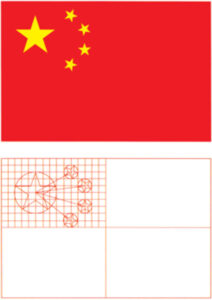Adopted at the Fourteenth Meeting of the Standing Committee of the Seventh National People’s Congress on June 28, 1990; Amended for the First Time in Accordance with the Decision of the Standing Committee of the Eleventh National People’s Congress on Amending Some Laws on August 27, 2009; Amended for the Second Time in Accordance with the Decision of the Twenty-Second Meeting of the Standing Committee of the Thirteenth National People’s Congress on Amending the Law of the People’s Republic of China on the National Flag on October 17, 2020

Article 1: In order to safeguard the dignity of the national flag, regulate its use, enhance citizens’ national consciousness, promote patriotism, and foster and practice the core socialist values, this law is formulated in accordance with the Constitution.
Article 2: The national flag of the People’s Republic of China is the five-star red flag.
The national flag of the People’s Republic of China shall be made in accordance with the national flag-making specifications promulgated by the Presidium of the First Plenary Session of the Chinese People’s Political Consultative Conference.
Article 3: The standard dimensions of the national flag are the five dimensions listed in the national flag-making specifications. In special circumstances where other dimensions of the national flag are used, they shall be proportionally enlarged or reduced in accordance with the standard dimensions.
The proportions of the national flag and flagpoles shall be appropriate and shall be adapted to the purpose of use, surrounding buildings, and the surrounding environment.
Article 4: The national flag of the People’s Republic of China is the symbol and sign of the People’s Republic of China.
Every citizen and organization shall respect and cherish the national flag.
Article 5: The national flag shall be hoisted daily in the following places or institutions:
(1) Tiananmen Square and Xinhuamen in Beijing; (2) The Central Committee of the Communist Party of China, the Standing Committee of the National People’s Congress, the State Council, the Central Military Commission, the Central Commission for Discipline Inspection of the Communist Party of China, the National Supervisory Commission, the Supreme People’s Court, the Supreme People’s Procuratorate; (3) The National Committee of the Chinese People’s Political Consultative Conference; (4) The Ministry of Foreign Affairs; (5) Airports, ports, railway stations, and other border crossings for entry and exit, border and coastal defense outposts.
Article 6: The national flag shall be hoisted on working days in the following places:
(1) Various departments of the Central Committee of the Communist Party of China and local committees at all levels; (2) Ministries of the State Council; (3) Standing Committees of the People’s Congresses at various levels; (4) People’s governments at various levels; (5) Disciplinary inspection commissions and supervisory commissions at various levels of the Communist Party of China; (6) People’s courts and specialized people’s courts at various levels; (7) People’s procuratorates and specialized people’s procuratorates at various levels; (8) Committees at various levels of the Chinese People’s Political Consultative Conference; (9) Various democratic parties and people’s organizations; (10) Relevant institutions of the Central People’s Government stationed in the Hong Kong Special Administrative Region and the Macao Special Administrative Region.
Schools shall hoist the national flag daily except during winter and summer vacations and on rest days. Kindergartens with conditions shall follow the regulations for schools to hoist the national flag.
Libraries, museums, cultural centers, art galleries, science and technology museums, memorials, exhibition halls, stadiums, youth centers, and other public cultural and sports facilities shall hoist or display the national flag on open days.
Article 7: On important festivals and commemorative days such as National Day, International Labour Day, New Year’s Day, Spring Festival, and National Constitution Day, national flags shall be hoisted in government agencies at all levels, people’s organizations, large squares, parks, and other public venues; enterprises, institutions, village committees, residents’ committees, and residential communities shall hoist the national flag if conditions permit.
National autonomous areas shall hoist the national flag on the founding anniversary of the autonomous region and major traditional ethnic festivals.
During the constitutional oath-taking ceremony, the national flag shall be displayed.
Article 8: On major celebrations, commemorative events, large-scale cultural and sports activities, and large-scale exhibitions, the national flag may be hoisted.
Article 9: The state advocates that citizens and organizations use the national flag and its patterns appropriately on suitable occasions to express patriotism.
When using the national flag pattern on the Internet, citizens and organizations shall comply with relevant Internet management regulations and shall not undermine the dignity of the national flag.
The standard version of the national flag pattern for online use shall be published on the websites of the National People’s Congress and the Chinese government.
Article 10: The methods for hoisting and using the national flag in diplomatic activities and by diplomatic missions and other diplomatic representative offices abroad shall be prescribed by the Ministry of Foreign Affairs.
Article 11: The methods for hoisting and using the national flag by the Chinese People’s Liberation Army and the Chinese People’s Armed Police Force shall be prescribed by the Central Military Commission.
Article 12: The methods for hoisting the national flag on civilian ships and foreign ships entering Chinese territorial waters shall be prescribed by the competent transportation authority of the State Council.
The methods for hoisting the national flag on ships performing entry and exit border inspection, border management, and security tasks shall be prescribed by the public security authorities of the State Council.
The methods for hoisting the national flag on ships of the national comprehensive fire rescue team shall be prescribed by the emergency management department of the State Council.
Article 13: When hoisting the national flag in accordance with the provisions of Articles 5, 6, and 7 of this Law, it shall be raised in the morning and lowered in the evening.
When it is necessary to hoist the national flag in accordance with the provisions of this Law, it may be omitted in case of severe weather.
Article 14: When hoisting the national flag, a flag-raising ceremony may be held.
During the flag-raising ceremony, the national anthem shall be played. During the raising of the national flag, personnel present shall face the national flag, stand at attention, or salute as required by regulations, and shall not engage in any behavior that undermines the dignity of the national flag.
A flag-raising ceremony is held daily at Tiananmen Square in Beijing.
Except during holidays, schools shall hold flag-raising ceremonies once a week.
Article 15: When the following persons pass away, the national flag shall be flown at half-mast in mourning:
(1) The President of the People’s Republic of China, the Chairman of the Standing Committee of the National People’s Congress, the Premier of the State Council, and the Chairman of the Central Military Commission; (2) The Chairman of the National Committee of the Chinese People’s Political Consultative Conference; (3) Persons who have made outstanding contributions to the People’s Republic of China; (4) Persons who have made outstanding contributions to world peace or human progress.
In the event of a national memorial ceremony or a serious natural disaster, sudden public health incident, or other unfortunate events causing significant casualties, the national flag may be flown at half-mast nationwide or in specific regions or places. The decision to fly the national flag at half-mast in accordance with the provisions of the first paragraph of this Article shall be made by the relevant department of the State Council or the people’s governments of provinces, autonomous regions, or municipalities directly under the Central Government.
The dates and places for flying the national flag at half-mast in accordance with the provisions of this Article shall be decided by the national mourning institutions established by the state or by the State Council.
Article 16: When the following persons pass away, their bodies, coffins, or urns may be covered with the national flag during mourning ceremonies:
(1) Persons as specified in paragraphs 1 to 3 of Article 15 of this Law; (2) Martyrs; (3) Other persons as prescribed by the state.
When covering with the national flag, the flag shall not touch the ground, and after the ceremony, the flag shall be retrieved and preserved properly.
Article 17: When hoisting the national flag, it shall be placed in a prominent position.
When marching in formation with the national flag and other flags, the national flag shall be ahead of other flags.
When hoisting the national flag simultaneously with other flags, the national flag shall be placed in the center, at a higher position, or in a prominent position.
When hoisting two or more national flags of different countries in foreign affairs activities, they shall be hoisted according to the regulations of the Ministry of Foreign Affairs or international practices.
Article 18: When hoisting and lowering the national flag on an upright flagpole, it shall be done slowly. When raising, the flag must be raised to the top of the pole; when lowering, the flag shall not touch the ground.
When flying the flag at half-mast, the flag shall first be raised to the top of the pole, and then lowered to a position one-third of the total length of the pole from the top. When lowering, the flag shall first be raised to the top of the pole, and then lowered.
Article 19: Damaged, soiled, faded, or non-standard national flags shall not be hoisted or used. The national flag shall not be hung upside down, reversed, or hoisted or used in other ways that undermine its dignity.
The national flag shall not be discarded at will. Damaged, soiled, faded, or non-standard national flags shall be collected and disposed of in accordance with relevant national regulations. After large-scale mass activities, the organizers shall collect or properly dispose of the national flags used at the activity site.
Article 20: The national flag and its patterns shall not be used as trademarks, granted design patents, or used in commercial advertisements, and shall not be used in inappropriate situations such as private funeral activities.
Article 21: The national flag shall be an important content of patriotism education.
Primary and secondary schools shall educate students to understand the history and spiritual connotations of the national flag, comply with the norms for hoisting and using the national flag, and observe the etiquette of flag-raising ceremonies.
The news media shall actively publicize knowledge about the national flag and guide citizens and organizations to correctly use the national flag and its patterns.
Article 22: The General Office of the State Council shall coordinate and coordinate the national flag management work nationwide. People’s governments at all levels shall coordinate and coordinate the national flag management work within their respective administrative regions.
Market supervision and management departments at all levels shall supervise and manage the production and sale of national flags.
Departments designated by county-level people’s governments shall supervise and manage the hoisting, use, and retrieval of national flags within their respective administrative regions.
The relevant departments of the Ministry of Foreign Affairs, the competent transportation departments of the State Council, and the relevant departments of the Central Military Commission shall supervise and manage the hoisting, use, and retrieval of national flags within their respective jurisdictions.
Article 23: Deliberate insults to the national flag of the People’s Republic of China in public places, such as burning, damaging, defacing, soiling, or trampling, shall be criminally liable in accordance with the law; those with minor circumstances shall be detained by the public security organs for up to fifteen days.
Article 24: This Law shall come into force on October 1, 1990.
Annex:
Specifications for National Flag Making
(Promulgated by the Presidium of the First Plenary Session of the Chinese People’s Political Consultative Conference on September 28, 1949)
The shape and color of the national flag are the same on both sides, and the five stars on the flag face each other. For convenience, this document only uses the face with the flagpole on the left as the standard for illustration. For the face with the flagpole on the right, all references to the left should be changed to right, and all references to the right should be changed to left.
(1) The flag is rectangular with a length-to-width ratio of 3 to 2, and the flag has a yellow five-pointed star in the upper left corner. One star is larger, with a diameter of one-third of the flag’s height, positioned on the left; four smaller stars, each with a diameter of one-tenth of the flag’s height, are arranged to the right of the large star. The flagpole sleeve is white.
(2) The positions and drawing methods of the five stars are as follows:
(a) To facilitate the determination of the positions of the five stars, first divide the flag face into four equal rectangles, and then divide the rectangle in the upper left corner into ten equal parts vertically and fifteen equal parts horizontally.
(b) The center of the large five-pointed star is located at the position of five up and five down, and ten left and right on this rectangle. The drawing method is as follows: take this point as the center and draw a circle with a radius of one-third. On this circular arc, determine five points at equal distances, with one point positioned directly above the center of the circle. Then connect each pair of points separated by two points to form five straight lines. The outline formed by these five straight lines is the required large five-pointed star. One point of the star faces directly upwards.
(c) The centers of the four small five-pointed stars are located as follows: the first point is at two up and eight down, and ten left and five right on this rectangle; the second point is at four up and six down, and twelve left and three right; the third point is at seven up and three down, and twelve left and three right; the fourth point is at nine up and one down, and ten left and five right. The drawing method is as follows: take the above four points as the centers, each with a radius of one part, and draw four circles respectively. On each circle, determine five points at equal distances, each with one point positioned on the connecting line between the center of the large five-pointed star and the four centers of the circles. Then use the same method as for the large five-pointed star to draw the small five-pointed stars. Each of the four small five-pointed stars has one point facing directly toward the center of the large five-pointed star.
(d) The colors of the national flag are bright red, bright yellow, and bright yellowish green. The specific color values are as follows:
Red (Table 1 of the Chinese National Flag Color Standard GB 13022-1991): Y30-6.5R/Y30-7R/Y30.5-7R/Y31-7R Yellow (Table 2 of the Chinese National Flag Color Standard GB 13022-1991): Y30-5R/Y30.5-6R/Y31-6R/Y31.5-6R Yellowish green (Table 3 of the Chinese National Flag Color Standard GB 13022-1991): Y10-7.5G/Y9.5-8G/Y9.5-8.5G/Y9-8.5G
(3) The flagpole is made of wood or metal, and the color is white.
(4) The flagpole sleeve is made of white cloth, and the length is one-tenth of the length of the flag.
(5) The specifications of the national flag are as follows:
Length: 1800 mm Width: 1200 mm Large five-pointed star: Diameter 600 mm Small five-pointed star: Diameter 200 mm The distance between the upper edge of the flag and the upper edge of the large five-pointed star: 312 mm The distance between the upper edge of the flag and the centers of the small five-pointed stars: 96 mm The distance between the left edge of the flag and the left edge of the large five-pointed star: 324 mm The distance between the left edge of the flag and the centers of the small five-pointed stars: 108 mm The distance between the lower edge of the flag and the lower edge of the large five-pointed star: 312 mm The distance between the lower edge of the flag and the centers of the small five-pointed stars: 96 mm
(6) When the national flag is displayed in multiple rows, the specifications of each flag shall be the same as above. The distance between the flags shall be one-half of the width of the flag.
(7) The standard dimensions of the flagpole are as follows:
Height: 10800 mm Diameter: 75 mm
(8) The ratio of the length of the flagpole sleeve to the length of the flag is one-tenth.
(9) The standard dimensions of the national flag are suitable for hanging on the flagpole of the central government, provincial governments, and county-level governments.

Flag making method pattern
Disclaimer: The regulation of the law in China is translated by GWBMA for reference only. There may be different interpretations of the Chinese version.


